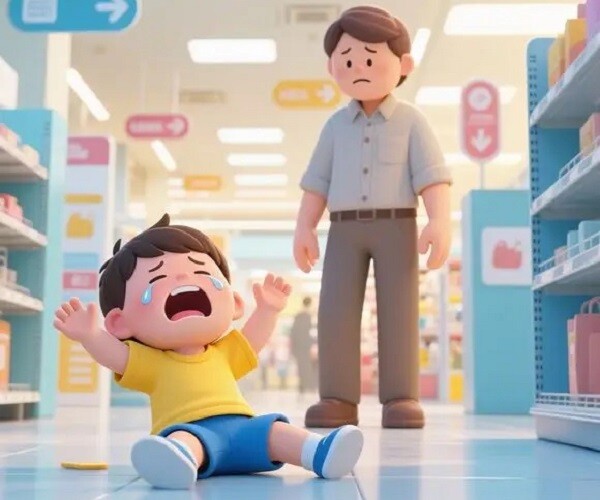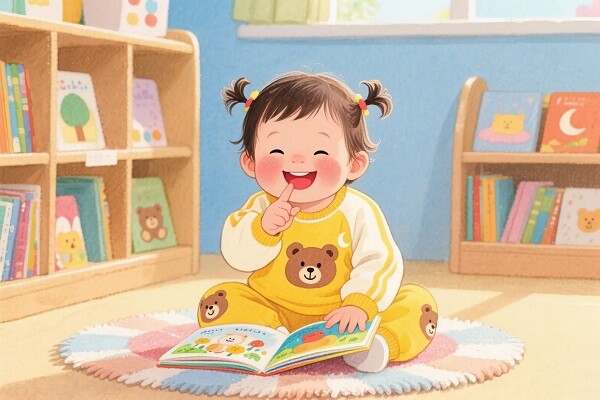A child’s response to being hit can reveal a lot about their self-perception, sense of security, and future relationship dynamics. Parents should not underestimate the significance of this momentary choice.


Children who “run away” tend to have a better sense of self-preservation
Psychologically, a child’s resistance or defiance can indicate a need for self-protection, a natural reflex when feeling threatened or facing unfair treatment.
When a child “runs away,” it doesn’t mean they are being cowardly; instead, they are perceiving an emergency situation.
Children are sensitive to their surroundings and can sense when the atmosphere is tense, and their parents are about to lose their temper. As a result, they instinctively activate their “self-defense” mechanism, choosing to keep a safe distance.

Healthy boundary awareness, according to psychology, is essential for children to develop their sense of self and protect their physical and mental health. They can distinguish between “you” and “me” and understand that “your” emotions cannot hurt “me” at will.
As a result, as they grow up, they are more likely to clearly express themselves when faced with unreasonable demands: “I already have three urgent tasks: A, B, and C. It will be difficult to ensure the quality of the new work. Can we coordinate resources or extend the deadline?”
The ability to negotiate and protect one’s interests stems from the childhood instinct to “escape danger.”
So, when your child says, “I don’t want to do this” or “I feel bad when you say that,” refrain from reprimanding them for disobedience. Instead, recognize that they are maturing and developing their own opinions with a stable mindset.

Children who cry and wait may exhibit higher sensitivity, but this can lead to a loss of self over time
Those who stand still, don’t dodge, and silently endure a hit are typically in a more complex situation. There are two main types: those who please and endure, worrying that their parents will become even angrier, and those who exhibit helplessness because they realize that running away is futile.
It’s not that these children aren’t afraid of their parents; it’s that they’ve been through it so many times that they’ve realized: “Running away? Dodging? Explaining? What’s the point? In the end, I still get yelled at and hit. Might as well save my energy…”
This phenomenon is known in psychology as “learned helplessness.”

As these two types of children grow up, they tend to become “invisible” in relationships because they are used to saying things like “It’s okay” and “I’ll do what you say, mom.”
Due to their weak self-protection ability, they may also struggle to fight for their rights in the harsh workplace environment later on, making it difficult to maintain fairness and healthy connections.

Children’s reactions reflect their family communication dynamics
A child’s response to criticism is a mirror that reflects their family’s daily communication style.
If parents are harsh and quick-tempered, children are more likely to withdraw (either placating or feeling helpless).
On the other hand, if there is frequent shouting and scolding in the household, children will instinctively choose to “escape” (self-defense).
However, if parents gently explain “You didn’t mean it” or discuss “What should we do next time”, children are more likely to recognize and correct their mistakes than if they were scolded or hit. This shows that the family encourages the expression of personality and that communication is safe.
Children learn to “read the room” from their family, their first “school.” Whether the atmosphere is calm or stormy, it directly shapes their survival strategies when facing conflicts.


Home should be a child’s safe haven
Whether they “run” or “don’t run,” what children need most is a home where they feel comfortable and can be themselves.
Children should be able to express themselves honestly:
“Mom, I don’t want to do this right now.”
“Dad, I feel sad when you shout at me.”
“I need some time to calm down.”
Home should not be a training ground but a safe base from which children can explore the world, heal their wounds, and start anew after recharging their energy.

If children have to hide their fears and find it difficult to say no to those closest to them, life can become exhausting.
So, when a child chooses to “run away,” honor their courage to protect themselves. At the same time, when a child stands firm and defiantly resists, it is a warning sign—a reminder for parents to reflect on their communication style and create a safe space for their child to express themselves. In this way, the home truly becomes a safe haven that supports the child’s well-being.
5 Traits of a Family That Signals a Child’s Future Success and Wealth: Does Your Family Have What It Takes?
“Certain familial traits and dynamics can significantly impact a child’s future success and wealth accumulation. This introduction explores the intriguing connection between specific family characteristics and the likelihood of raising children who go on to achieve financial prosperity and maturity.”
“4 Magical Phrases to Use When Your Child Argues Back: A Guide for Parents”
“The Power of Effective Communication: Transforming Defiant Children into Obedient Angels.
As parents, we hold the key to unlocking our children’s potential for obedience and respect. Our communication style plays a pivotal role in teaching our defiant little ones to become more compliant and understanding.”







































